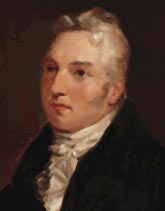Coleridge was a good friend of William Wordsworth but altogether more erratic. A brilliant student at Christ's Hospital School in London ,he left for Cambridge with high hopes. However after a couple of years he fell into debt, and in a panic enlisted in the army under the name of Silas Tomkyn Comberbache. After demonstrating he could not ride a horse, the army allowed him to be released, and after a brief further stint at Cambridge he left without a degree.
He became firm friends with Wordsworth and they lived near each other, first in the west of England and later in the Lake District. They agreed to publish a collection together called Lyrical Ballads. Coleridge's contribution was Rime of the Ancient Mariner, which Wordsworth unkindly thought 'injurious to the volume', but which of course has become one of the most famous poems in English literature.  His other famous poem is 'Kubla Khan'. It has a preface where he tells of sheltering in a house and using an 'anodyne' because of illness -- this is a polite term for opium, to which he eventually became seriously addicted. In his preface he records how he he fell asleep and imagined the kingdon Xanadu of Kubla Khan. As he does so the very words of the poem rise up before him. Then a man from Porlock on business knocks on the door and the dream is disturbed and the words forgotten. This says much about the transitory nature of poetic inspiration and the powers of imagination -- Coleridge is interested in the connections between creativity, dreams, and the lesser known regions of the mind. It is also classic Coleridge that someone from the 'real' world breaks up his poetic trance. The poem itself has many metaphors for creativity and even a kind of sexual imagery. But it is also mysterious, and such a strange and fragmentary poem was not thought respectable at the time. Coleridge did not even publish it until 1817, nearly twenty years after its composition in 1798.
His other famous poem is 'Kubla Khan'. It has a preface where he tells of sheltering in a house and using an 'anodyne' because of illness -- this is a polite term for opium, to which he eventually became seriously addicted. In his preface he records how he he fell asleep and imagined the kingdon Xanadu of Kubla Khan. As he does so the very words of the poem rise up before him. Then a man from Porlock on business knocks on the door and the dream is disturbed and the words forgotten. This says much about the transitory nature of poetic inspiration and the powers of imagination -- Coleridge is interested in the connections between creativity, dreams, and the lesser known regions of the mind. It is also classic Coleridge that someone from the 'real' world breaks up his poetic trance. The poem itself has many metaphors for creativity and even a kind of sexual imagery. But it is also mysterious, and such a strange and fragmentary poem was not thought respectable at the time. Coleridge did not even publish it until 1817, nearly twenty years after its composition in 1798.
Later in life as his poetic powers waned, Coleridge turned to metaphysical and philosophical concerns. In the midst of much personal misery, he managed to produce a large body of insightful, if dense, work on the significance of the Imagination, the brilliance of Shakespeare and the mysteries of the writing of the Gospels. His most significant work of the later periods of his life is Biographia Literaria, which outlines some of his aesthetic theories. Typically, the aesthetic judgements are built on a foundation of German-influenced philosophy, but Coleridge famously avoids making the link between his theoretical approach and practical judgement of literature clear.
Coleridge is important in outlining some of the concerns of Romanticism. He is interested in the Imagination, by which he meant an inspired act of genius, recreating the act of Creation on a minor scale. This was a new idea for art, which was considered a kind of craft, not an act of Genius. He also traced the interactivity of mind and nature -- he agreed with Wordsworth that the mind was formed by nature, but to see and appreciate nature the mind had to be active and imaginatively transform what simply arrived at the eye. Lastly, Coleridge encouraged reflection on the hidden features of the mind. Previously, philosophies of the mind had thought of it like a blank sheet which simply recorded things and ultimately became more complex. Coleridge speculated on the 'under-conscious', what we today would call the ‘unconscious', that realm of the mind that we are not aware of and from which creativity springs. In late life he became the grand old man of literature and a fixture of Highgate; his addiction carefully controlled by a physician.